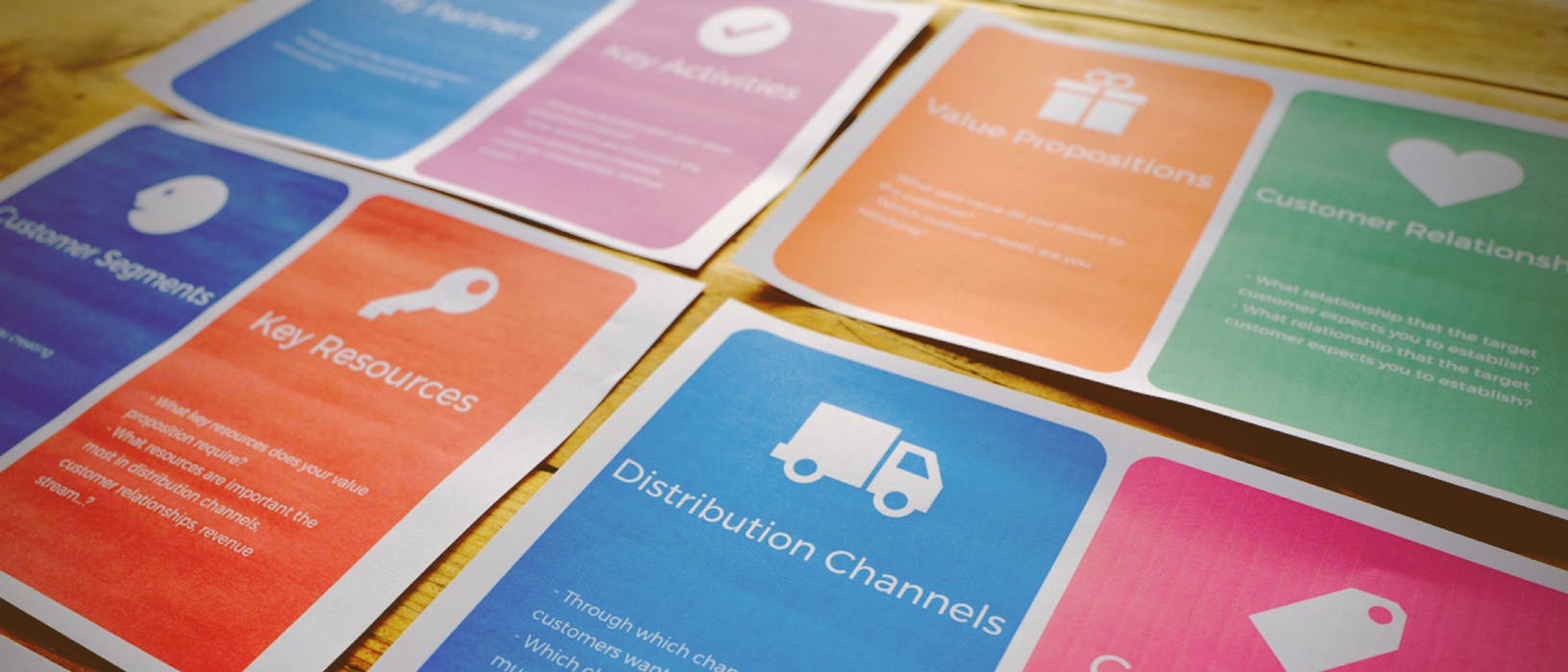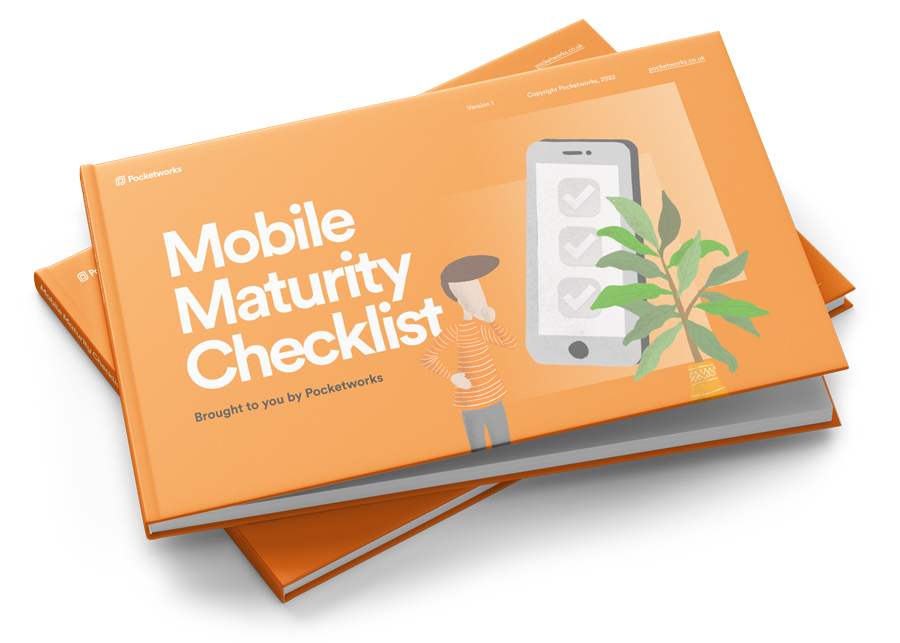Developing a mobile strategy will ensure you build the right thing. It will help you get the most value for the least investment. In summary, creating a strategy involves looking at business-level objectives and then deciding how technology should be used to achieve them.
Pssst... check out our FREE mobile strategy resources. These include an updated strategy process overview, a strategy template and examples of strategies adopted by companies such as Nike.
Clarify the business strategy
You probably already know where your business is heading. If you take the time to communicate this to your mobile development team, it will speed up your project and reduce costs.
As mobile developers, a mobile strategy allows us to give you more value because we can offer properly framed ideas and input. Typically, we would build a picture of your business strategy over a few weeks as we speak to you and your team. Here are some activities we perform that help speed up the process.
Business Model Canvas
A business model canvas is a large sheet of paper with boxes for writing high-level information such as mission, values, revenue streams, and customer segments. Having this information helps us get a broad view of the things that drive your business. It's usually a quick exercise and is very helpful for orienting the team around what is important at the highest level.
Definition of Success
Usually, this is a list of factors that you believe will result in a growing business. For example, a taxi business might aim to automate 50% of its customer bookings to allow for increased capacity, as well as increase its driver pool by 20%. Often, this can be stated with Key Performance Indicators. This is useful because any mobile ideas can be assessed against how they will impact future success.
Customer Journey Maps
These are visual maps showing the big picture of how customers interact with your products and services. Their usefulness lies in their ability to reveal opportunities where technology can help. They stimulate thought and allow everyone to see a high-level view. If done thoroughly, you might see parts of your customer experience that you had forgotten about or didn't know existed.
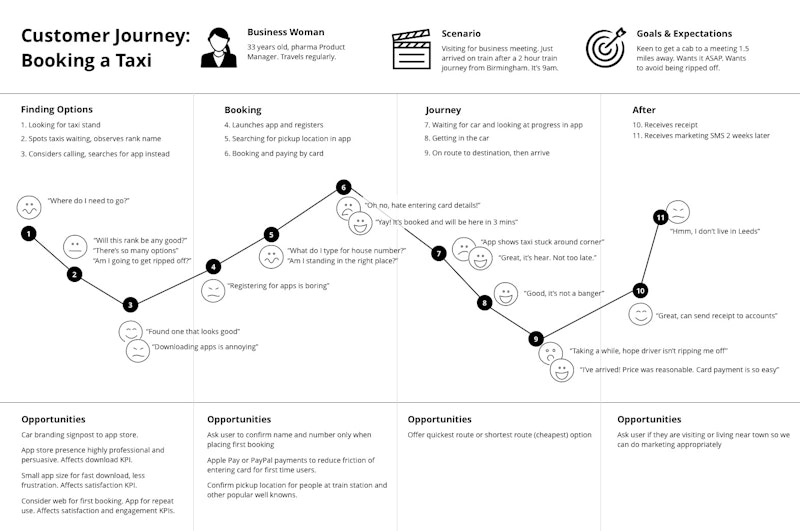
Competitor Analysis
Most innovators don't want to be led by their competitors. However, it's important to look at what your competitors are not doing so you can see where you're product could fill the gap.
There are two types of competitor analysis. The first looks at the value offering - what value your competitors are offering to consumers. An example is shown to the side.
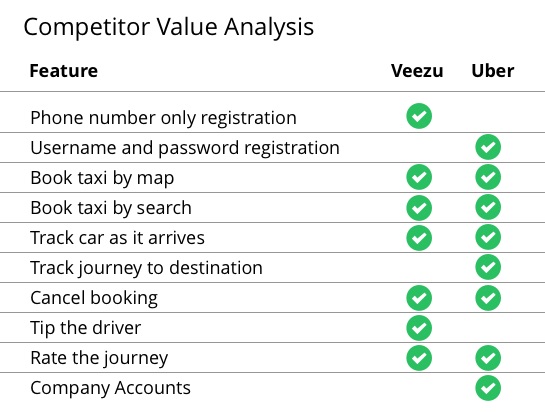
The second looks at best practices—where your competitors are technically doing things well. For example, only send notifications when they are relevant. Or ensuring users don't have to hunt for valuable features tucked away in menus.
The Lean Canvas
Unlike the business model canvas, a Lean Canvas can be used to map out essential information for a startup.
This is a popular tool for startups. It captures information such as Target Audience, Unfair Advantages, Key Success Metrics and Revenue Streams.
For startups, we'll often prepare a lean canvas with sticky notes, and then talk through it and tweak based on feedback from the founders.

Creating a mobile strategy
The mobile strategy should be aligned with the overall business strategy.
It draws on customer journeys to see where pain points can be eliminated. A mobile strategy is about finding the best opportunities and broadly planning how to reach them.
Strategy Headlines
These are like an elevator pitch for the value you'll offer to your audience and why it is useful. It should be long-term and realistic. It should shout loud and proud, representing a significant step forward for your business.
Here is an example (more in the sidebar).
"We will develop a customer taxi booking app so that customers can order cars faster than a phone call, avoid waiting in call queues and, giving them more timely information about the status of their booking so they always know what is happening. This will allow us to increase automation by 20% in year one, and up to 50% over 3 years. It will allow us to double our weekly bookings without increasing the call-centre size."
Roadmap
The roadmap is a visual timeline of key deliverables. It is a communication tool between the team developing the value identified in the above headlines and the key stakeholders in the business. The roadmap should be big-picture enough to show what progress will be delivered over the next 12 months, without needing significant reshuffling.
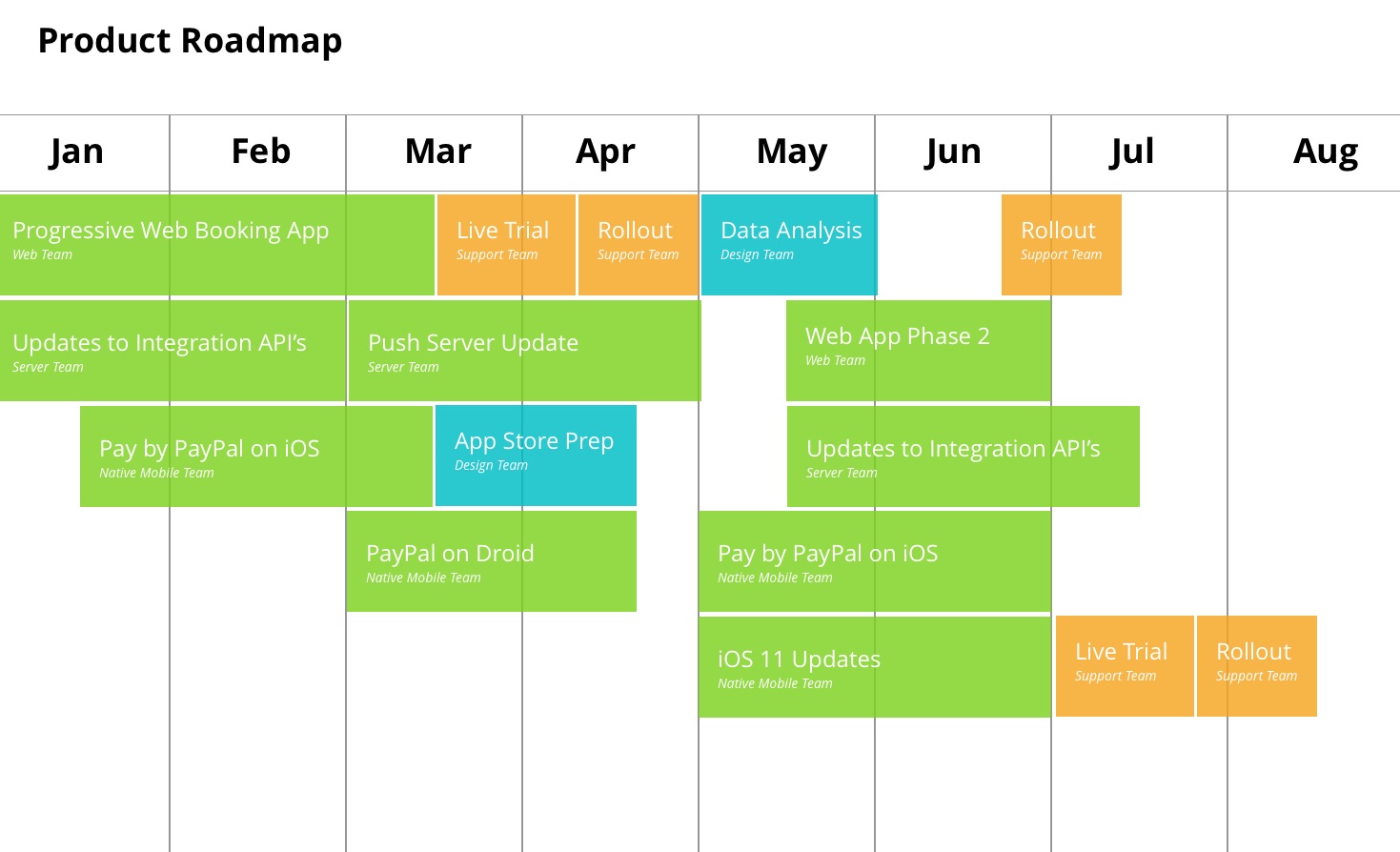
Budget
After the deliverables have been defined and a roadmap put together, it is possible to set a budget.
The budget for an agile project is typically a function of the size of deliverables required in the given time period, the number of people needed to deliver those, and the additional costs of equipment, software licences, and expenses.
Businesses have different rates of investment. For example, if the above roadmap requires £150,000, but the business has £75,000 in its annual development budget, then the roadmap would need to be stretched out over a longer period.
Lean Product Management
The Lean Startup approach works beyond startups; it can be used for enterprise app development and app improvement projects. When working lean, you prioritise the highest value items first and then focus on only those. This is useful because 1. you get a product to market faster, 2. you get valuable feedback and learn quickly and 3. you require less upfront budget and can start getting ROI faster.
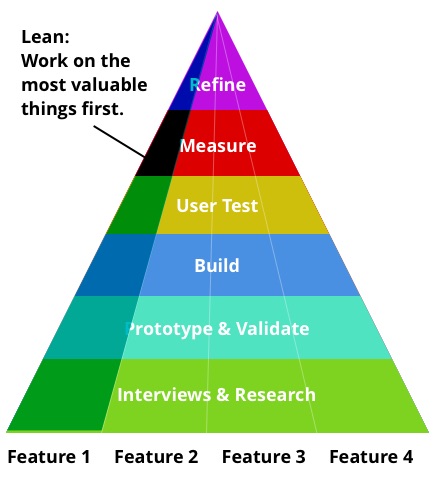
An alternative to this approach is the waterfall approach, where you plan and build a lot of things upfront to a fixed budget and scope. This is comfortable to many businesses because they see it as less risk. The downside is that you take longer to launch, and the process isn't optimised for learning, changing scope and failing fast. We'd argue that this is more risky.
Designing digital products
So far, we've identified the opportunities and the major deliverables that need to be built, so we can build the right thing. The success of this plan relies on how it is executed. We call this building the thing right.
Here are some of the tools we use to increase the chances of successful execution when creating a mobile app or mobile-first website.
Finding the most important jobs to be done
"Jobs to be done" is a way of describing what a user needs to be able to accomplish. The key to starting a mobile or web app is to identify a few of these and focus on executing them brilliantly. If you were to analyse the top 5 favourite apps, you'd realise that they allow people to get jobs done very quickly and efficiently. Therefore, the trick is to deliver value to people as quickly as possible. For example, Uber allows customers to book a taxi in a very short timeframe. Flipboard allows readers to scan and read a wide range of news sources in a single place with ease. Read more about delivering value to app users quickly.
Interviewing users and defining personas
When creating any digital product, it needs to be fit for the target audience using it. The key here is to understand the pain points they experience around each use case and look to find ways to remove that pain. An effective way of doing this to build a persona is to interview real customers. You can then find the pain points and look to ease them during product design.
Building prototypes
App prototypes are like a "fake app" that is drawn on paper or a screen. Creating prototypes is a great way to explore ideas. This is because it's much less expensive than developing a real working app, and allows teams to test hypotheses quickly. The prototypes will draw on the jobs to be done and the personal pain points to form a solution. You can prototype anything - mobile apps, chatbots, websites, or watch screens.
Testing prototypes on real people
Prototypes can be tested on real people to get feedback from the target audience. This is one of the fastest ways of learning if the product concept is easy to use, easy to understand and allows people to perform jobs quickly. It's because your testers are not invested in the product; they have fresh eyes and lack the domain expertise of the product team. We partner with companies that specialise in this and also test in-house guerrilla-style.
Tuning for growth
It's unlikely you'll get perfect results the first time you launch a digital product. For example, you might find that only 30% of your customers buy something, or perhaps only 2% subscribe, or only 2% return to your app within the first month.
In our experience, you should do three things to tune your app for growth.
- Implement analytics that tell you where customers drop off in your key journeys
- Allocate time to study those analytics and spot problems or opportunities
- Run experiments to try to improve the results.
For example, Amazon discovered that, by changing the colour of the "Buy" button, they could increase purchases by over 10%. Similarly, I recently saw our team run an experiment where we changed the design of a paywall, which led to almost double the number of app users subscribing.
If you're looking for more useful information to help you craft a solid mobile strategy, then check out our mobile strategy resources. Or, if you need some help figuring out your strategy, we offer advisory services at reasonable prices. Give us a call.
